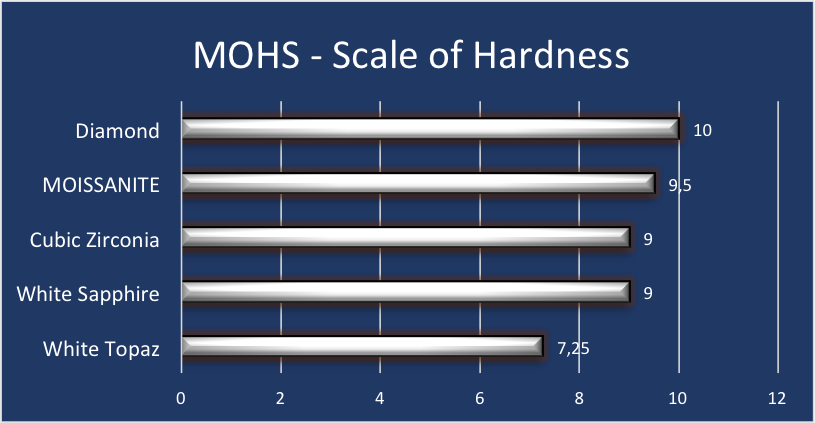[cs_content][cs_element_section _id=”1″ ][cs_element_row _id=”2″ ][cs_element_column _id=”3″ ][x_custom_headline level=”h2″ looks_like=”h3″ accent=”false”]The secret of Moissanite
[/x_custom_headline][/cs_element_column][/cs_element_row][cs_element_row _id=”5″ ][cs_element_column _id=”6″ ][cs_text _order=”0″]
Moissanite is a gemstone discovered in a crater created by a meteorite from outer space.
Henri Moissan, a French scientist, first discovered microscopic particles of Moissanite in 1893 in this meteorite crater. These meteorite fragments were scattered across the earth after a meteorite impact some fifty thousand years ago and kept this brilliant secret…
Mr. Moissan discovered a kind of new mineral. It was outstanding with its sparkle, fire and brilliance. This mineral consists of silicon carbide. As the naturally occurring quantity of Moissanite is so rare, the wish to produce silicon carbide as Moissanite in an artificial way was born. In 1997, Moissanite was produced artificially for the first time in gemstone quality.
[/cs_text][/cs_element_column][/cs_element_row][/cs_element_section][cs_section bg_color=”#332c2c” parallax=”true” separator_top_type=”none” separator_top_height=”50px” separator_top_inset=”0px” separator_top_angle_point=”50″ separator_bottom_type=”none” separator_bottom_height=”50px” separator_bottom_inset=”0px” separator_bottom_angle_point=”50″ bg_pattern=”https://www.meteoregemstone.at/wp-content/uploads/2018/09/moissanit.jpg” class=”cs-ta-center” style=”margin: 0px;padding: 150px 0px;”][cs_row inner_container=”false” marginless_columns=”false” style=”margin: 0px auto;padding: 0px;”][cs_column fade=”false” fade_animation=”in” fade_animation_offset=”45px” fade_duration=”750″ type=”1/1″ style=”padding: 0px;”][x_gap size=”25%”][/cs_column][/cs_row][/cs_section][cs_element_section _id=”12″ ][cs_element_row _id=”13″ ][cs_element_column _id=”14″ ][x_custom_headline level=”h2″ looks_like=”h3″ accent=”false”]Moissanite – a high quality product [/x_custom_headline][cs_text]A Moissanite gemstone has several qualities in common with a Diamond:
its very high index of refraction, its extreme hardness and its transparency. But one of the biggest advantages of Moissanite is that it can be manufactured reliably, sustainably and efficiently in the laboratory.
[/cs_text][/cs_element_column][/cs_element_row][cs_element_row _id=”17″ ][cs_element_column _id=”18″ ][cs_text _order=”0″][/cs_element_column][/cs_element_row][cs_element_row _id=”20″ ][cs_element_column _id=”21″ ][x_accordion][x_accordion_item title=”Brilliance – Refractive Index” open=”false”]The refractive index is the measurement of a gemstones ability to slow down, bend, and reflect light. The greater the R.I., the greater the brilliance of the gemstone.
Brilliance is the flashes of white light exiting the top and sides of a gemstone.

[/x_accordion_item][x_accordion_item title=”MOHS – Scale of Hardness” open=”false”]
Moissanite is the 2nd hardest gemstone next to the Diamond.
It is very scratch resistant and has an extremely long life.

[/x_accordion_item][x_accordion_item title=”Diffusion of light” open=”false”]
Moissanite splits the incoming light in the colours of the rainbow.
Therefore, Moissanite has a special “fire” and is number 1 in the following ranking:

[/x_accordion_item][x_accordion_item title=”REGARDLESS OF RESSOURCES” open=”false”]
As a Diamond is a very rare unsustainable natural resource, which is limited, Moissanite gemstones made in laboratory never need a mine. The production of Moissanite is eco- friendly and sustainable.

[/x_accordion_item][/x_accordion][/cs_element_column][/cs_element_row][/cs_element_section][/cs_content]
